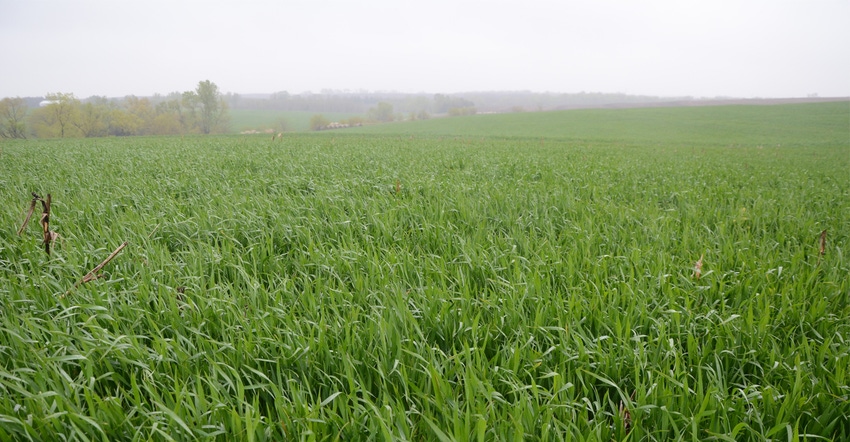
Most people have heard of No-Shave November and its message for preventative health. However, unless you're an avid no-tiller, you may not have heard of No-Till November.
No-Till November was conceived by USDA's Natural Resources Conservation Service several years ago to encourage farmers to "keep the stubble," and to avoid tillage at a time when many opt for it — right after harvest.
"We are excited to reinvigorate a focus on no-till practices," says Aaron Hird, Nebraska NRCS soil health specialist. "Soil health is totally dependent on minimal or no disturbance of the soil. The No-Shave November idea resonated with us. It helps catch people's attention and makes them reconsider the concept of no-till at a key time."
It's at this time, in the fall, when residue and soil structure are valuable to retain precipitation over the winter and spring. Studies continually show that fields with residue left intact over the winter start the next growing season with more moisture in the soil profile.
New soil horizons
"The continued capacity of the soil to function is dependent upon it being sheltered and protected," Hird says, noting that soil that has never been tilled or farmed has an organic (O) surface horizon.
"The O horizon is an organic, rich layer of topsoil. It's a layer of nonrooted debris," Hird explains. "It's stable. It's not like it's blowing around or disconnected. It's not just living or dead plants.
"Crop residue cover is usually built up over one or two years. The O horizon is the unconsolidated or unidentifiable leftovers of composting. It exists as kind of a leftover of decomposed material. It's high-carbon and full of biology."
And, Hird says, by continually adding carbon to the system through diverse rotations, no-till and cover cropping, it's entirely possible to rebuild carbon-rich topsoil.
"I've seen soybean roots growing through this organic material above the soil surface," Hird says. "The organic material was left on the surface because it was a no-till system. The farmer was using cover crops and composted manure in a diverse cropping system, and had built that O horizon. That's what we're trying to achieve. It's a big sponge full of water, carbon, living things."
Just moving to no-till can improve soil water infiltration over time, and Hird advises using no-till is great before diving into cover crops.
"I've seen some fields reach 4 to 14 inches per hour infiltration rates, well above normal," Hird says. "I've seen bulk density around 1 gram per cubic centimeter in those same fields. When it's below 1.33, that's less than half the bulk density of the soil — 1.33 is half air, half soil. This allows the air to go out and let water into the soil."
More water infiltration
Research by Paul Jasa, Nebraska Extension engineer, at Rogers Memorial Farm east of Lincoln has found that after 40 years of continuous no-till, the soil has an infiltration rate of 4 inches per hour. Meanwhile, the long-term tilled plots have an infiltration rate of 0.4 inches per hour.
"Four inches per hour is phenomenal," Hird says. "That's more rain than we would ever receive in just one hour. That matters a lot. I have measured 2.5 inches per hour repeatedly on a farm in Otoe County that has the beginnings of an O horizon. That was amazing to see. That's a lot of water you can drop and watch it go into the soil."
"When we keep the soil covered and add carbon to the ecosystem, we are changing the water storage capacity of the soil," Hird says. "It can store more or less depending on how much carbon is in that system and the soil texture.
"The idea behind No-Till November is starting anew. It's our time to focus on not doing fall tillage to retain the soil structure and function. After harvest is when we see a lot of tillage occur. It's a good reminder of the benefits of no-till as a soil health principle. We want winter and spring precipitation events to go in the soil."
About the Author(s)
You May Also Like






